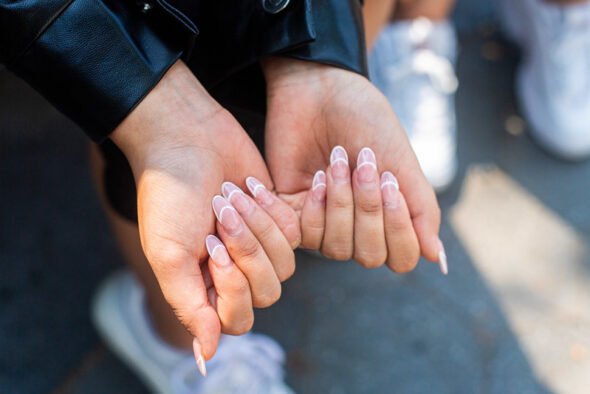The grasp that social media apps – such as TikTok and Instagram – have on the fashion industry has become increasingly unavoidable as micro-trends continue to gain traction among Gen Z and millennials.
Micro-trends are cheap, stylish fashion items that are designed to last until the end of the current season and are often born from the screens of social media. These looks tend to disappear from storefronts as quickly as they entered, resulting in consumers constantly turning to their feeds in search of the newest designs.
“I’d say that although my fashion choices are inspired by friends, designers, and people I see while out and about, online trends definitely influence my fashion choices, even on a subconscious level,” said Brenden Pollock, a graduate student at Columbia University. “Even if it’s not necessarily a part of a trend, repeatedly seeing types of pieces and brands that influencers are wearing and posting online introduces me to brands and styles I was once unfamiliar with and expands my idea of what is fashionable.”
Online clothing companies such as SHEIN and AliExpress have risen to popularity for their inexpensive, low-quality outfits that are often on-trend with the latest season. Fast fashion corporations often offer items that are made of nylon and polyester, resulting in clothing that will not survive long term wear.
These fast-moving, disposable micro-trends have created a reckoning within the fashion industry and the issue of sustainability. According to The World Bank, 10 percent of global greenhouse gas emissions are created from footwear and clothing production, resulting in massive amounts of items ending up in landfills.
An interview with SHEIN CMO Molly Mio and published by Forbes revealed that the store “drops 700-1,000 new styles daily”, creating a revolving door of low-quality goods that often end up in the trash before consumers can wear them.
According to the UNEP, “if demographic and lifestyle patterns continue as they are now, global consumption of apparel will rise from 62 million metric tons in 2019 to 102 million tons in 10 years”.
“I buy online. I don’t thrift too much,” said NYU freshman Hannah Choi. “I feel like because of the pandemic I’ve done a lot of online shopping. But it’s hard to find online stores that I trust, since some can have bad quality things.”

NYU freshman and Manhattan resident Hannah Choi shows off her TikTok-inspired manicure at Washington Square Park on Sunday, Sept. 12. Photo by Julia Bonavita
But it is impossible to deny the vast number of micro-trends that have been curated from the endless ‘For You Page’ on TikTok. Fashion icons, such as Gucci, Dior and Nike, boast a combined 4.6 million followers on the platform, showcasing the need for luxury brands to cater to the Gen Z audience.
Articles have surfaced with predictions of what looks will be “must-haves” for Fall 2021, and storefronts along New York City’s iconic SoHo are already boasting platform loafers, flare jeans, and blazers – all items that were first seen on TikTok’s fashion influencers.
“I like the styles I see on TikTok and I wish I could dress like that, it’s just hard to keep up with,” said NYU freshman Ali Chioffi.
With terms like “cheugy” – something that was once stylish but no longer is – and “camp” – outrageous fashion – floating around the internet, consumers are often faced with the decision to participate in fast fashion and micro-trends or be labeled as “out of style”.
However, many brands are encouraging consumers to shop sustainably, with current trends in mind. Harper’s Bazaar’s “10 Simple Steps to Being More Sustainable” urges buyers to shop for trans-seasonal clothing, learn how to maintain items and donate unwanted clothes, in an effort to reduce fashion waste.
“I like to incorporate trends with my own l interests to create a more individual sense of style. When I shop, I would buy something that I like even if others don’t get it or dislike it,” said Pollock.


Comments
[…] Read more @ pavementpieces.com […]
[…] creators are often copied by rich influencer-based businesses that want to come out with the next TikTok micro-trend in […]
[…] these jeans are a micro-trend moment. I hate a micro-trend — I could write a whole thing about them specifically. Micro-trends are bad […]
[…] these jeans are a micro-trend moment. I hate a micro-trend — I could write a whole thing about them specifically. Micro-trends are bad […]
[…] these jeans are a micro-trend moment. I hate a micro-trend — I could write a whole thing about them specifically. Micro-trends are bad […]
[…] these patterns, it makes the pants even stiffer than they already are. Also, these jeans are a micro-trend moment. I hate a micro-trend — I could write a whole thing about them specifically. Micro-trends are bad […]